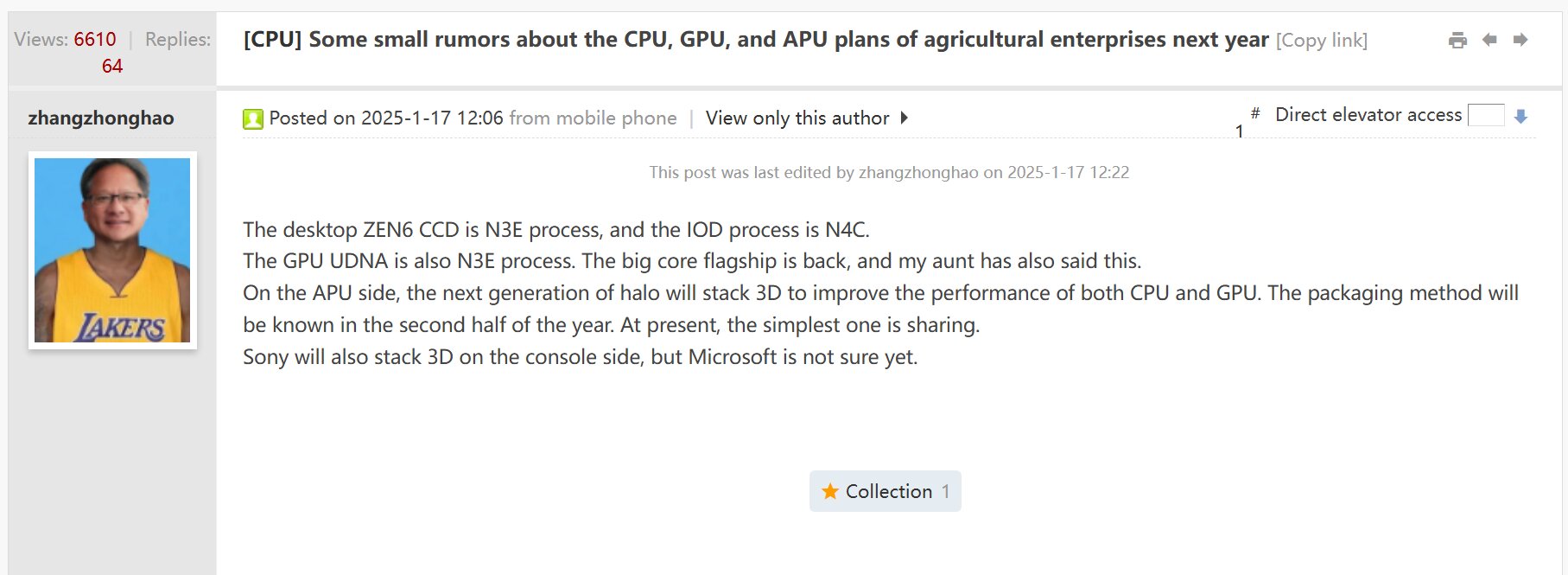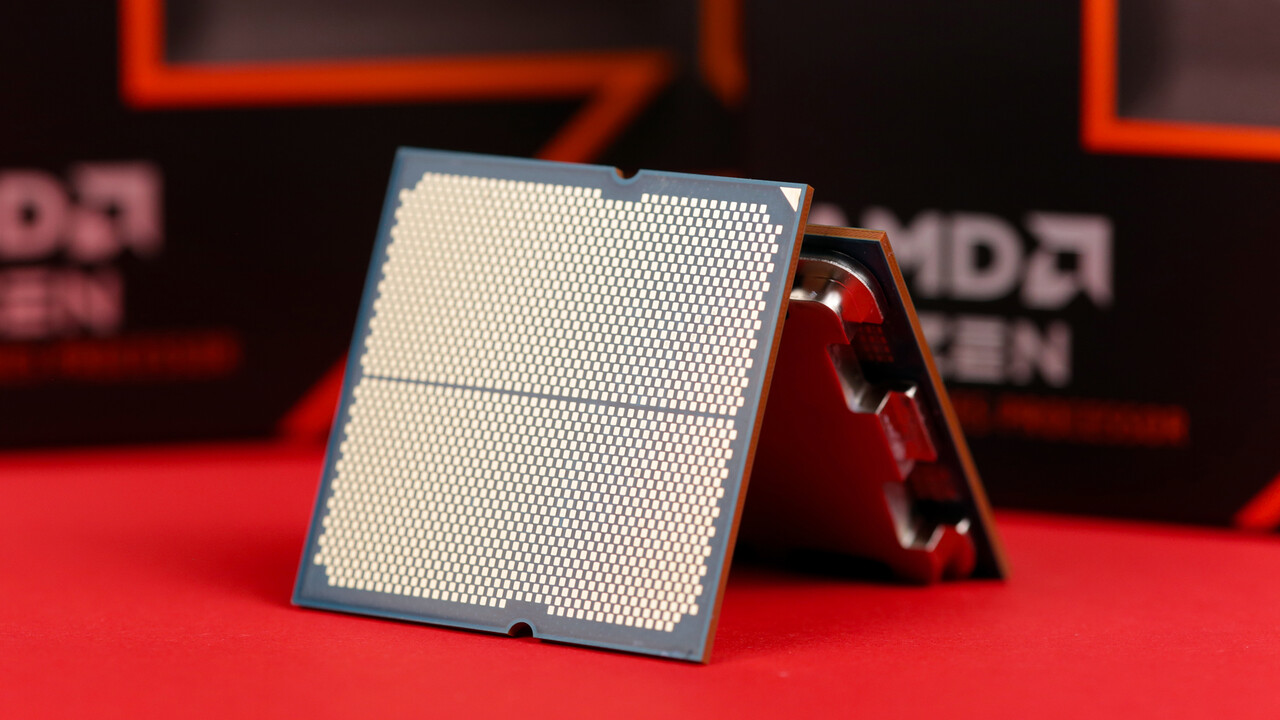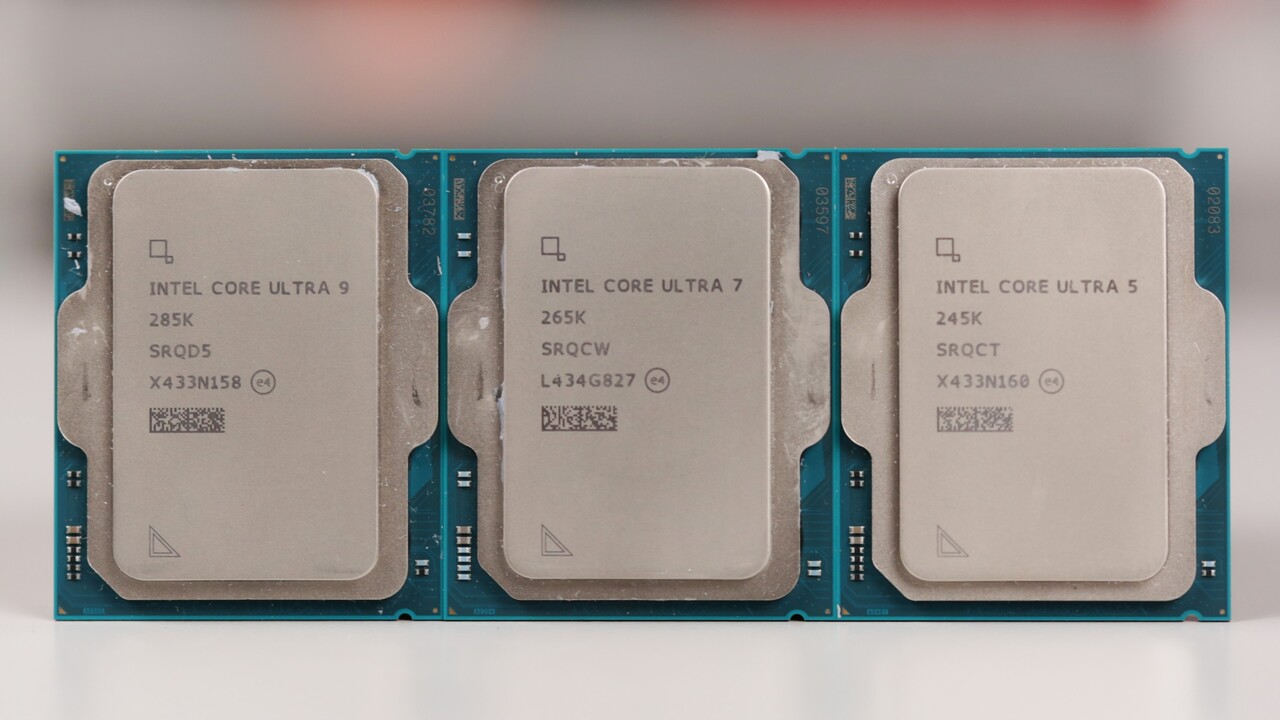AMD Rumors: Return to High-End GPUs and X3D Cache for PlayStation 6

The first RDNA 4 generation graphics cards aren’t even available yet; there are already rumors about their successors, which will introduce the name UDNA instead of RDNA 5. Apparently, big high-end chips are coming back with UDNA. There is also speculation about Zen 6 and a PlayStation with X3D cache.
This hypothesis is expressed by the very accurate tipster Zhangzhonghao on the Chinese forum Chiphell. “The big flagship is back,” he says literally about the UDNA generation, scheduled for 2026 and using the N3E (3nm enhanced) manufacturing process.
 The latest rumors from the Chiphell forum (Image: Chiphell)
The latest rumors from the Chiphell forum (Image: Chiphell)
As AMD forgoes high-end chips in the soon-to-be-launched RDNA 4 generation, successors could once again compete in the higher class.
What exactly is behind UDNA remains to be seen. The new name has at least already been confirmed by AMD and is intended to represent a unification of the previously separately developed gaming (RDNA) and server (CDNA) architectures.
Zen 6 with 4nm IOD
At the same time, unconfirmed information about the next generation of Zen 6 processors as a desktop variant is expressed in the same place. As a result, a Core Complex Die (CCD), i.e. the chipset that contains the processor cores, is also manufactured using TSMC’s improved 3nm process. The N4C process is used for the I/O chip, that is, the chiplet with interfaces such as PCI Express. This is a cheaper variation of the N4P process.
The predecessors, the current Ryzen 9000 with Zen 5, still use N4P for the CCDs and the N6 process for the I/O chip. The N3E had a rocky start initially, but has been available to a larger group of customers since 2024.
Here’s what TSMC says about the new processes.
Following N3 technology, TSMC introduced N3E and N3P, enhanced 3nm processes for improved power, performance and density.
TSMC
Bringing TSMC’s advanced technology to a wider range of applications, TSMC announced N4C, an extension of N4P technology with up to 8.5% reduction in die costs and low adoption effort, including volume production is planned in 2025. N4C offers an area-efficient IP and core design. rules fully compatible with the widely adopted N4P, with improved yield through reduced chip size, providing a cost-effective option for premium products looking to migrate to TSMC’s next advanced technology node.
TSMC
X3D for the successor to Halo and PlayStation
Additional L3 cache (X3D), which AMD provides to some desktop and laptop processors to significantly increase their gaming performance, will also be available in other product areas in the future. This already exists with Genoa-X in the server sector, but now APUs and SoCs for game consoles will also follow. More specifically, use is expected in a new generation of the Halo APU. 3D cache is intended to speed up not only the CPU, but also the GPU. There had already been rumors in this direction from the same source in November, where there was also speculation about future use in Ryzen Threadripper.
AMD SoC with 3D cache for the PlayStation 6?
Now Sony‘s PlayStation is also entering the scene for the first time. A custom SoC including a 3D cache would therefore be an option for the PlayStation 6. However, Microsoft does not yet know if additional stack memory would be an option for a new Xbox.
Topics: AMD AMD RDNA graphics cards PlayStation Radeon processors Source: Chiphell.com

Marc deciphers processors by testing their performance for gaming, content creation, and artificial intelligence.


